The Czerwiński Sparrow, sometimes known as the de Havilland Canada glider, was a single seat glider, designed and built by a group of de Haviiland engineers in Canada in 1942. It was intended to popularise gliding and be suitable for both basic training and thermal soaring.

The DFS Rhönsperber, otherwise known as the Schweyer Rhönsperber or Jacobs Rhönsperber was a single seat competition glider designed in Germany by Hans Jacobs and first flown in 1935. For several years it was regarded as the best German sailplane and about one hundred were built.
The UTG-1 Loudon was an intermediate glider designed and built at the University of Toronto in Canada during the late 1940s.
The IIL IS-10 was a high-performance, single-seat glider, designed and built in Romania in the early 1960s. It was the first Romanian aircraft to use laminar flow airfoils.
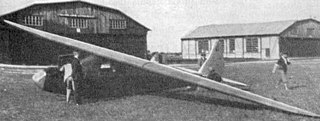
The one-off, experimental Czerwiński CW IV was a Polish high performance glider and the nation's first two-seater. It set several national records and influenced later Polish designs.

The Czerwiński CW 5bis was a Polish high performance sailplane, produced and developed between 1933 and 1935. It set several national records, competed at both national and international level and remained a Polish gliding club mainstay until the outbreak of World War II.

The Czerwiński CW 7 was a Polish aerobatic glider first flown in 1934. Despite a structural weakness that prevented inverted flight, a small batch of CW 7s were used by several aeroclubs until the start of World War II.

The Czerwiński CW 8 was a mid-1930s Polish open-frame basic training glider. Its design was advanced and its price low, but its stalling characteristics were too dangerous for beginners, so the thirty-plus examples completed were rapidly withdrawn from use. Two were subsequently modified, one with greater span and the other with a small engine.
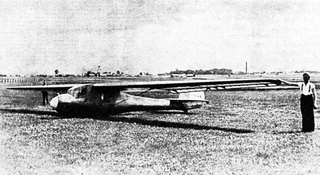
The ITS-IVB was a 1930s Polish two seat research sailplane designed to gather meteorological and airframe stress data. The sole example remained in service up to outbreak of World War II.

The Blaicher B-38 was a Polish, single seat sailplane completed in 1938. Notable for its use of long span Fowler flaps, its development was ended by the German invasion of Poland in September 1939.
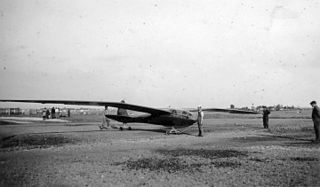
The PWS-102 Rekin was a progressive development of the PWS-101, intended for cross-country flights. The prototype flew in an international contest in 1939 and the first of a projected production series was flown before the start of World War II.
The PWS-103 was a high performance, Polish 15 m span sailplane developed from the longer-span PWS-102 just before World War II.
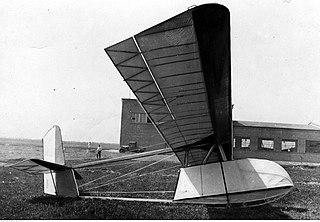
The Czajka (transl. Lapwing) or Kocjan Czajka after its designer was a Polish secondary training glider which was in continuous production from 1931 to the start of World War II. More than 160 were completed in Warsztaty Szybowcowe in Warsaw.

The D.W.L. SG-21 Lwów was a Polish high performance sailplane built for the Polish government. Though both it and a development, the SG-28, were one-offs, they set several national records and led to the batch-produced Warsztaty Szybowcowe SG-3.

The Grzeszczyk SG-3 was a Polish single-seat, high performance sailplane first flown in 1933. Between 1934 and 1937 it was Poland's most successful competitor and record setter; about twenty-five were completed.
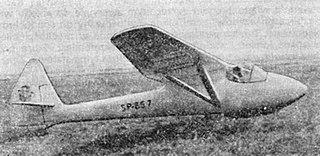
The Warsztaty Szybowcowe Sokół was a 1930s Polish aerobatic sailplane. Ten were built and flown by Polish aeroclubs, participating in national and international events, until the outbreak of the Second World War.
The Warsztaty Szybowcowe Mewa was a Polish, high performance, two seat sailplane flown in 1936 and built in small numbers.

The Warsztaty Szybowcowe SG-7 was a Polish high performance, single seat sailplane. Two prototypes flew in 1937 but, outperformed by their contemporaries, no more were built.
The Jancsó-Szokolay M22 was a Hungarian single-seat sailplane first flown in 1937. Twenty were built and the type set several national records. Some remained in service up to about 1953.

The single-seat Kocjan Komar (Gnat) intermediate trainer, designed in 1932, was the leading and most produced sailplane in pre-war Poland. Production was resumed after World War II as the IS-B Komar and it remained in use until 1965.
















